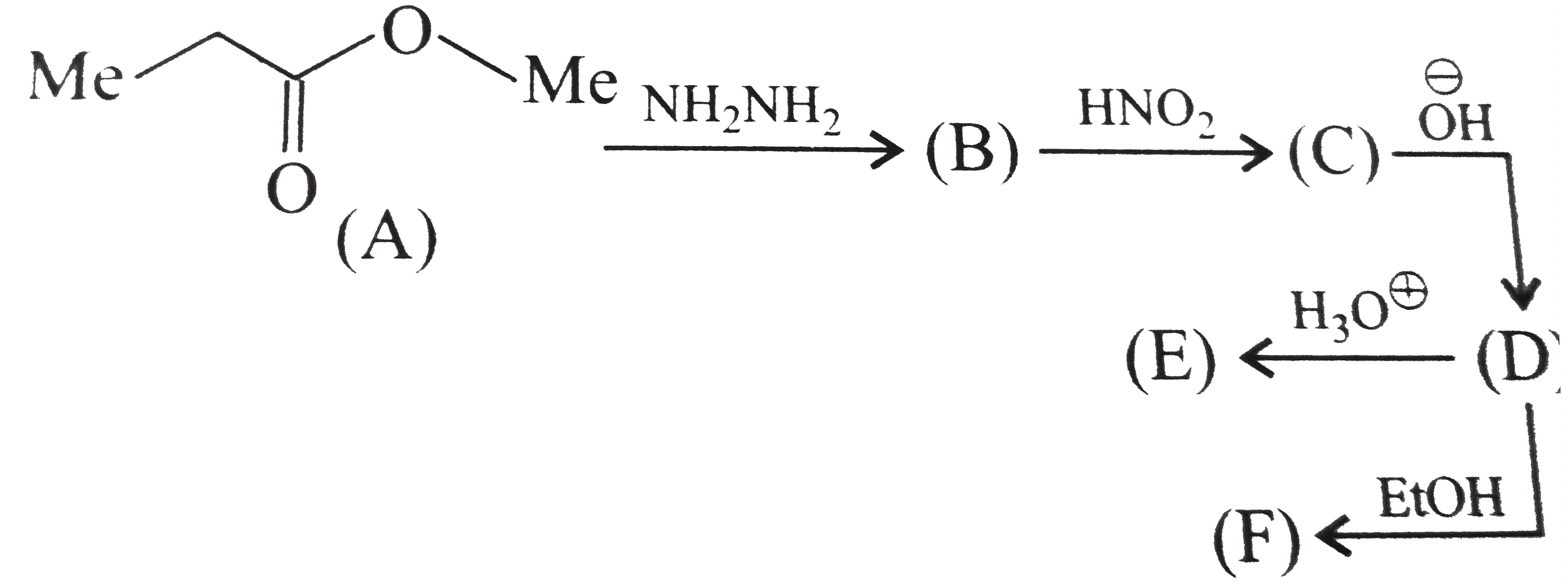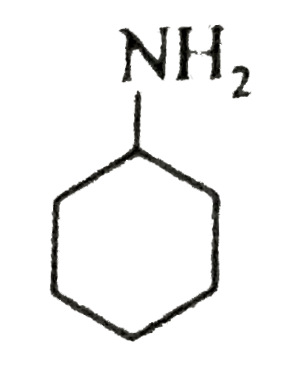Identify (A), (B), (C ) and (D) and give their formula:
(A)(aq)+Zn→(B)(g)
(A)(aq)+(C)Δ−−→PH3
(A)(aq)+NH4CI→(D)(g)
Compound (A) imparts golden yellow colour to the Bunsen flame.
Video Solution
Text Solution
Compound (A) imparts golden yellow colour to the Bunsen flame, it seems (A) is NaOH.
N(A)aOH(aq)+Zn→Na2ZnO2+H2(g)(B)
NaOH(aq)(A)+P4(C)White phosphorousΔ−−→NaH2PO2+PH3
NaOH(aq)(A)+NH4CI→NaCI+NH3↑(D)+H2O
Hence, (A) is sodium (NaOH) hydroxide, (B) is hydrogen gas (H2), (C ) is white phosphorous (P4) and (D) is ammonia gas (NH3).
|
Topper's Solved these Questions
- S-BLOCK GROUP 1 - ALKALI METALSBOOK - CENGAGE CHEMISTRYCHAPTER - S-BLOCK GROUP 1 - ALKALI METALSEXERCISE - Ex 4.1 (Subjective)
24 Videos
- S-BLOCK GROUP 1 - ALKALI METALSBOOK - CENGAGE CHEMISTRYCHAPTER - S-BLOCK GROUP 1 - ALKALI METALSEXERCISE - Ex 4.1 (True/False)
1 Video
- S-BLOCK GROUP 1 - ALKALI METALSBOOK - CENGAGE CHEMISTRYCHAPTER - S-BLOCK GROUP 1 - ALKALI METALSEXERCISE - Archives Subjective
8 Videos
- REDOX REACTIONSBOOK - CENGAGE CHEMISTRYCHAPTER - REDOX REACTIONSEXERCISE - Archives (Integers)
1 Video
- S-BLOCK GROUP 2 - ALKALINE EARTH METALSBOOK - CENGAGE CHEMISTRYCHAPTER - S-BLOCK GROUP 2 - ALKALINE EARTH METALSEXERCISE - Ex 5.1 Objective
2 Videos
Similar Questions
Knowledge Check
(i) Inorganic compound 'A'(aq)+DeVarda's alloyΔ−−→B(g)+salt
(ii) 'A'(aq)+CΔ−−→PH3(g),
(iii) A(aq)+NH4ClΔ−−→D(g)+Cl−+H2O,
(iv) B is colourless combustible lightest gas.
(v) D-truns red litmus blue.
Which of the following combination is correct ?AA=KOH
B=H2
C=H3PO3
D=NH3BA=NaOH
B=H2
C=H3PO4
D=PH3CA=NaOH
B=H2
C=H3PO4
D=NH3DA=NaOH
B=H2
C=P4
D=NH3Identify A and B in the following reactions
AAq. NaOH −−−−−−→C2H5OHAgOH←−−−BAA=C2H2,B=C2H6BA=C2H5Cl,B=C2H4CA=C2H4,B=C2H5ClDA=C2H5Cl,B=C2H5CL(A)CI2/h2−−−−→(B)aq.KOH−−−−→(C)[O]−−→CH3CHO
Identify A,BandC .AEthyl alcohol, Ethyl chloride and EthaneBEthane Ethyl chloride and Ethyl alcoholCPropane Propyl chloride and Propyl alcoholDAll of the above
Complete the following reaction :
(a)
(b)
( c)
(d)
( e)
(f) PhCHON3H/H⊕−−−−−→Δ(B)H3O⊕−−−→(C)+(D)
(g)
View SolutionIdentify (A), (B), (C ), (D), and (E ) in the following reactions and write their structures.
 Br2/CCI4−−−−−−→ (A) NaNH2−−−−→ (B) HgSO4−−−→H2SO4 (C )
Br2/CCI4−−−−−−→ (A) NaNH2−−−−→ (B) HgSO4−−−→H2SO4 (C )
(C)NH2NHCONH2−−−−−−−−−→(D)
(C)NaOD/D2O(Excess)−−−−−−−−−−−−−→(E)
View SolutionThe product D of the reaction CH3ClKCN−−→(A)H2O−−→(B)NH3−−→(C)Δ−−→(D) is
View SolutionGiven the sequence of reactions,
NH4NO2(aq)+OH−(aq)→NH4NO−2(aq)+H2Ol
NH4NO−2(aq)→N2O(g)+OH−(aq)
The catalyst for the overall reaction is
View SolutionThe product D of the reaction CH3ClKCN−−→(A)H2O−−→(B)NH3−−→(C)Δ−−→(D) is
View Solution
